This week I’ve thrown the gauntlet to a guest blogger to offer a timely warning for anyone wishing to go foraging for mushrooms this Autumn. I hand you over to James …..
As we enter the season of mists and decay, the delights of foraging for fruits and fungi are certain to be promoted on countless countryside programmes and in the glossy magazines that accompany wildlife charities’ newsletters. The colourful profusion of fungi across the countryside, lit up by the low-angled sun glinting through russet leaves and glistening spiders’ webs, is what makes autumn the most glorious of seasons to be out and about in Britain. I have on occasion plundered the odd wild mushroom for the pot – if you know what you are doing, nothing beats a home made Chanterelle omelette, a grilled Parasol cap stuffed with Parma ham and Stilton, or pasta with blewits in a blue cheese sauce. Nevertheless, the enthusiastic expertise of the presenters and authors of these articles is not shared by the majority of the populace in our country hence, members of the public eager to get back to nature with their culinary creations may be leading themselves into grave danger. So, if you’re thinking of going down into the woods today to collect rich pickings from Nature’s bounty for your table, here are 10 reasons why it may be a bad idea:
- There are over 14,000 known species of fungi on the British list (and probably more yet to be identified). Of these, perhaps 20 are known and prized esculents, an unknown number (probably hundreds) are indigestible or toxic to some degree, at least 10 are deadly poisonous with potentially lethal effects, and the majority are untested, unappetising or simply without culinary value. Identification of even a fraction of these species with confidence takes many years of study, practice and learning from experts – it is not sufficient just to briefly consult a pocket field guide or a phone app, useful though these can be in conjunction with other sources of information.
- Most edible species have poisonous lookalikes (at least, to the untrained eye) – the delicious Wood Blewits can resemble a toxic Cortinarius, while a different (and deadly) Cortinarius species has been mistaken for the Chanterelle. There is also a ‘False Chanterelle’ which, while not deadly poisonous, can be fiendishly difficult to distinguish from the real thing!
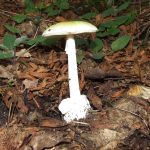
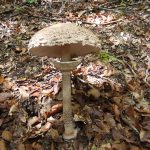
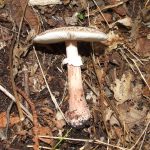
Would you know the difference between these three mushrooms? To the untrained eye, they all look the same.
- Even the most renowned edible species should only be eaten when in good condition; an edible mushroom that has ‘gone off’ can be just as bad for you as a poisonous species.
- Most species, including the edible ones, change their appearance and characteristics (including shape, size, gill colour and other critical details for identification) very rapidly during their life cycle. Not only are some species only edible when young, but some can grow to resemble other species with age and become increasingly difficult to identify as they deteriorate.
- The most deadly fungal toxins known to mankind are complex chemicals, many of which have yet to have their full pathological mechanisms elucidated – other than that they are very efficient at causing acute organ failure if ingested by a human. This means that in most cases, there is no known antidote or cure to poisoning from, say, a Death Cap (Amanita phalloides).
- Most fungal genera (Amanita, Russula, Lactarius, Boletus) include both edible and poisonous species, so even a broad knowledge of the typical characteristics of a genus is no guarantee of selecting an edible species.
- Many genera (Inocybe and Cortinarius in particular) have many similar-looking species that are difficult to identify with certainty without either microscopic examination of spores or chemical treatments (ammonia, etc. often elicits a species-specific colour change).
- Familiarity breeds contempt – if you are used to foraging in a particular area for a particular species, it is easy to get complacent and not realise that a similar, poisonous species could be growing in the same place, and harvest it along with your favourite edible species.
- In recent years, the notorious and aptly-named Death cap (Amanita phalloides), normally associated with ancient oak woodland, has been spotted in parks and public gardens; whether due to climate change or an other unknown reason, the spread in range of a toxic species increases the chance of inadvertent gathering of ‘mushrooms’ by the public who may not recognise its distinguishing features, with fatal consequences.
- There are genetic differences in human (and animal) reactions to fungi: some of the most deadly mushrooms to humans can be eaten without ill-effect by (e.g.) slugs, mice or rabbits, so seeing another creature eating a mushroom in the wild doesn’t mean it’s safe for us to do so! Furthermore, some of the critical features for identification (smell, taste) can only be experienced by a proportion of the population, presumably due to genetic variation – some even smell and taste different to men and women! Different books may report different opinions on the edibility or otherwise of a fungus, and certain species may be eaten with impunity by some and cause gastric upsets in others – again, presumably due to genetics, or possibly preparation (some species are edible only if well-cooked, or become toxic if consumed with alcohol).
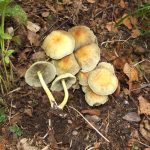
The above cautions all relate to the possibility of error by the consumer. More insidiously, a recent TV feature highlighted the potential dangers to the foodie-loving public of illegal and unscrupulous ‘commercial’ fungus foragers who collect indiscriminately on a huge scale from sites such as the New Forest and Epping Forest, attracted by the lucrative rewards of selling the harvest on to markets and restauranteurs. Although this TV programme can be somewhat alarmist and sensationalist, it does raise the valid point that we cannot always assume when we order the ‘wild mushroom risotto’ on a menu or buy a mix of wild mushrooms from the local market, that the suppliers of these fungi know – or even care – what they are collecting and selling on. Equally, with more upmarket restaurants and ‘gastro-pubs’ jumping on the fresh-local-organic-seasonal produce bandwagon, are all of them equally rigorous at checking the provenance and identity of the wild fungi for which they gratefully pay generous sums of money? Given the worst-case scenarios, it might be advisable to eat only fungi that you can recognise, even within a nouvelle cuisine experience – otherwise it may be more gastro-enteritis than gastro-pub!
Notwithstanding the above, I urge anyone who loves nature and the British countryside to venture out over the next couple of months, whether on your own or with an organised foray, get down and dirty in the leaf litter and enjoy the splendour of this most fascinating kingdom of organisms. The magic of mushrooms lies in their mystery and diversity, not just their culinary value; an introduction to the ever-expanding science of mycology can prove addictive and be the inspiration for a lifetime of pleasure.
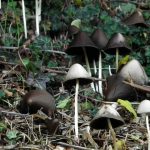
James Macpherson

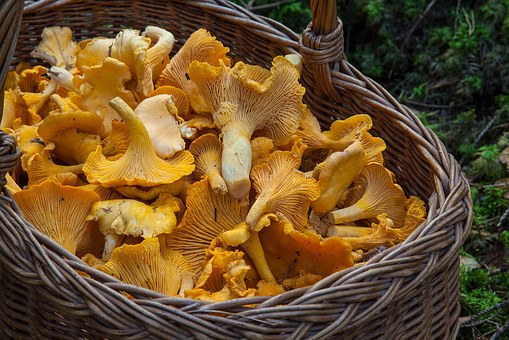
Hi there! Such a great post, thanks!